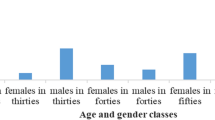Abstract
Machine learning algorithm to enhance the complex speech signal for mobile communication is one of the research problems in signal processing. The objective of this research paper is to develop a learning algorithm that improves the quality and intelligibility of voice signals that gets are corrupted by real world noise while they are transmitted through the channel. In this paper, we consider a semi-supervised machine learning algorithm for mobile phones that comes with system software to improve SNR of speech signal which is corrupted by manmade disturbance. Most of the disturbances are non-stationary where the effect of noise is non-uniform for all spectral components. In the projected algorithm training, the system is completed with a set of speech and noise data base. System parameters are derived during training process; these parameters are updated as per the disturbance present in the signal. These parameters are used to remove the noise present in speech signal. The obtained results show a substantial progress in SNR by 5–8% as compared to traditional methods.














Similar content being viewed by others
References
Jin W, Liu X, Scordilis MS, Han L. Speech enhancement using harmonic emphasis and adaptive comb filtering. IEEE Trans Audio Speech Lang Process. 2010;18(2):356–68.
Yegnanarayana B, Prasanna SRM, Rao KS. Speech enhancement using excitation source information. In: 2002 IEEE International Conference on Acoustics, Speech, and Signal Processing, Orlando, FL, USA, pp. I-541-I-544, 2002.
Stockham TG, Cannon TM, Ingebretsen RB. Blind deconvolution through digital signal processing. Proc IEEE. 1975;63(4):678–92. https://doi.org/10.1109/PROC.1975.9800.
Makhijani R, Shrawankar U, Thakare VM. Improving speech intelligibility in an adverse condition using subband spectral subtraction method. In: IEEE Transactions on Communications and Signal Processing (ICCSP), pp.168–170, 2011.
Shao J, Huang C, Yang Q, Luo G. Reliable semi-supervised Learning. In: 2016 IEEE 16th International Conference on Data Mining (ICDM), Barcelona, 2016, pp. 1197–1202.
Morris L, Barszczewski P, Bosloy J. Algorithm selection and software time/space optimization for a DSP micro-based speech processor for a multi-electrode cochlear implant. In: ICASSP'87. IEEE International Conference on Acoustics, Speech, and Signal Processing, pp. 972–975, 1987.
Yorozu Y, Hirano M, Oka K, Tagawa Y. Electron spectroscopy studies on magneto-optical media and plastic substrate interface. In: IEEE Transl. J. Magn. Japan, vol. 2, pp. 740–741, August 1987 (Digests 9th Annual Conf. Magnetics Japan, p. 301, 1982).
Rongshan Yu. Speech enhancement based on soft audible noise masking and noise power estimation. Speech Commun. 2013;55(10):964–74.
Ilmi M, Huda M, Rahardhita WS. Automatic control music amplifier using speech signal utilizing by TMS320C6713. In: 2015 International Electronics Symposium (IES), Surabaya, 2015, pp. 163–166.
Lezzoum N, Gagnon G, Voix J. Voice activity detection system for smart earphones. IEEE Trans Consum Electron. 2014;60(4):737–44.
Shah JH, Shah SK. Real time and embedded implementation of hybrid algorithm for speech enhancement. In: 2011 World Congress on Information and Communication Technologies, Mumbai, 2011, pp. 341–345.
Hai-chun Y. A TMS320C6416 DSP real time implementation of continuous wavelet filtering module. Proced Eng. 2011;23:665–70.
Cai Y, Yuan J, Ma X, Hou C. Low power embedded speech enhancement system based on a fixed-point DSP. In: 2009 Eighth IEEE International Conference on Dependable, Autonomic and Secure Computing, Chengdu, 2009, pp. 132–136.
Yermeche Z, Sallberg B, Grbic N, Claesson I. Real-time DSP implementation of a subband beamforming algorithm for dual microphone speech enhancement. In: 2007 IEEE International Symposium on Circuits and Systems, New Orleans, LA, 2007, pp. 353–356.
Kuo-Guan W, Po-Cheng C. Efficient speech enhancement using spectral subtraction for car hands-free applications. In: IEEE Transactions on Consumer Electronics, pp. 220–221, Jun 2001
Jameel A, Siyal MY, Ahmed N. Transform-domain and DSP based secure speech communication system. Microprocess Microsyst. 2007;31(5):335–46.
Egelmeers G, Sommen P, de Boer J. Realization of an acoustic echo canceller on a single DSP. In: 1996 8th European Signal Processing Conference (EUSIPCO 1996), Trieste, Italy, 1996, pp. 1–4.
Wong CKW, Marvasti F, Chambers WG. Implementation of recovery of speech with impulsive noise on a DSP chip. Electron Lett. 1995;31(17):1412–3.
Morris L, Barszczewski P, Bosloy J. Algorithm selection and software time/space optimization for a DSP micro-based speech processor for a multi-electrode cochlear implant. In: ICASSP '87. IEEE International Conference on Acoustics, Speech, and Signal Processing, 1987, pp. 972–975.
Siomalas K, Bowen B. Synthesis of efficient pipelined architectures for implementing DSP operations. IEEE Trans Acoust Speech Signal Process. 1985;33(6):1499–508.
Miyazaki R, Saruwatari H, Inoue T, Takahashi Y, Shikano K, Kondo K. Musical-noise-free speech enhancement based on optimized iterative spectral subtraction. IEEE Trans Audio Speech Lang Process. 2012;20(7):2080–94.
Jin YG, Shin JW, Kim NS. Spectro-temporal filtering for multichannel speech enhancement in short-time Fourier transform domain. IEEE Signal Process Lett. 2014;21(3):352–5.
Kamath S, Loizou P. A multi-band spectral subtraction method for enhancing speech corrupted by colored noise. In: 2002 IEEE International Conference on Acoustics, Speech, and Signal Processing, Orlando, FL, USA, 2002, pp. IV-4164-IV-4164.
Author information
Authors and Affiliations
Corresponding author
Ethics declarations
Conflict of Interest
On behalf of all authors, the corresponding author states that there is no conflict of interest.
Additional information
Publisher's Note
Springer Nature remains neutral with regard to jurisdictional claims in published maps and institutional affiliations.
This article is part of the topical collection “Computational Statistics” guest edited by Anish Gupta, Mike Hinchey, Vincenzo Puri, Zeev Zalevsky and Wan Abdul Rahim.
Rights and permissions
About this article
Cite this article
Ugraiah, P., Shivabasave Gowda, C.K. Semi-Supervised Learning to Enhance Speech Signal for Mobile Communication. SN COMPUT. SCI. 1, 364 (2020). https://doi.org/10.1007/s42979-020-00374-x
Received:
Accepted:
Published:
DOI: https://doi.org/10.1007/s42979-020-00374-x




